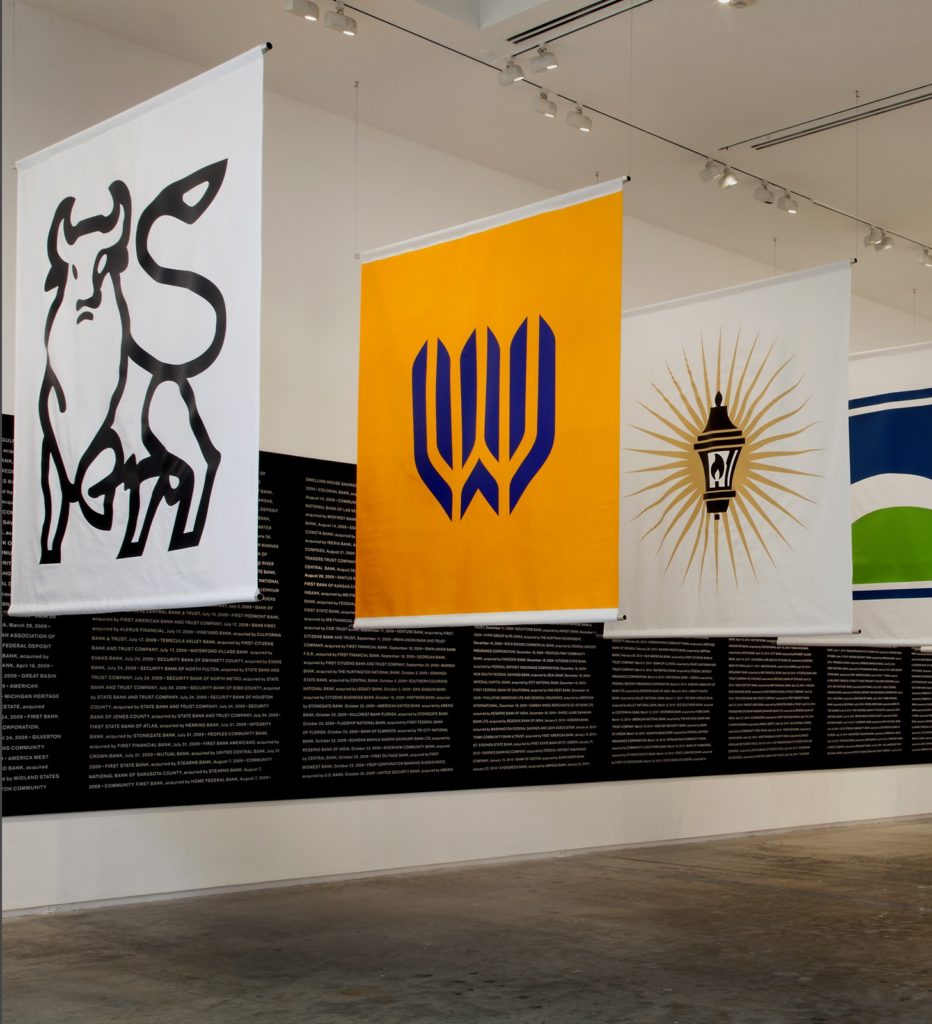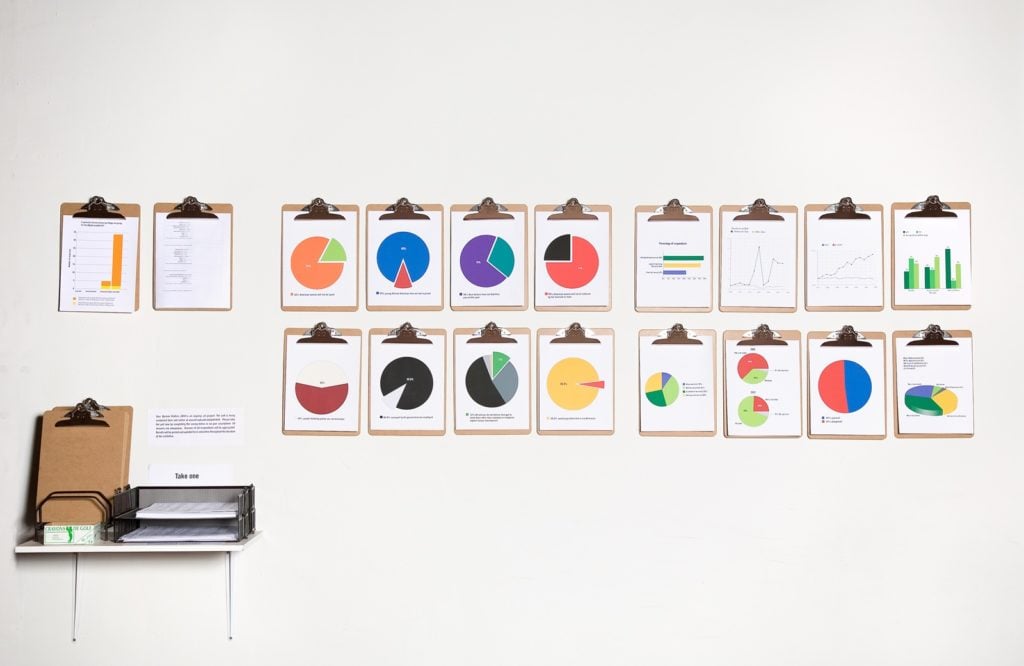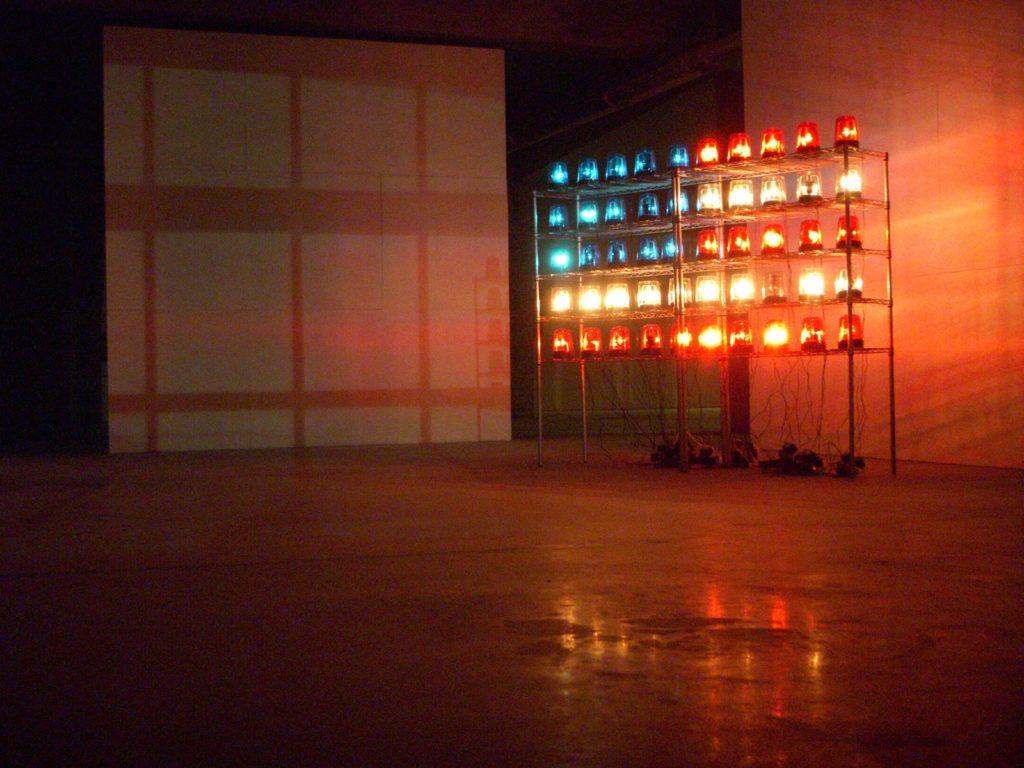Art & Exhibitions
Is Capitalism Doomed? A New Museum Imagines the Downfall of the Economic System
The nascent institution aims to give us enough distance to evaluate both capitalism's benefits and the harm it does.

The nascent institution aims to give us enough distance to evaluate both capitalism's benefits and the harm it does.

Brian Boucher

If capitalism is slowly on the outs, as some economists and theorists say it is, should there be a museum to preserve its artifacts? The Museum of Capitalism (MOC), an aspiring institution at the very earliest phase of development, opens its first exhibition this month in a disused warehouse in Oakland, California. Its ambitious goal is to educate future generations about the economic system’s “ideology, history, and legacy,” per its mission statement, in the vein of history museums and so-called museums of conscience.
Headed up by the artist duo FICTILIS (Andrea Steves and Timothy Furstnau) and supported by a $215,000 grant from the Emily Hall Tremaine Foundation, its debut exhibition is to be housed in a temporary space in Oakland’s post-industrial Jack London Square, an area with multiple vacant warehouses. The artist list, totaling a whopping 83, includes members from around the globe.
“Fredric Jameson supposedly once said that it’s easier to imagine the end of the world than the end of capitalism,” said Steves in a phone interview, “and making capitalism a ‘museum piece’ is partly an effort to help us do just that.” The artists do not purport to be experts on capitalism, and Furstnau said that even experts disagree on the fundamentals. “There are prominent historians, like Wolfgang Streeck, who argue that we are coming out of capitalism, and then McKenzie Wark, who argues that we are now in something worse.”

Dread Scott, Poll Dance, 2010.
Among the works in the show are Mexican artist Fran Ilich’s Space Bank/Money Museum (2005–2107), consisting of documentation of what the artist calls a functional alternative banking system. There’s also Dread Scott’s Poll Dance (2010), a series of graphs that riff on systems of classifying people by race, class, and gender. Other works address the vicissitudes of financial institutions: Superflex’s Bankrupt Banks (2012) consists of a set of banners with logos of banks that have declared bankruptcy, while Michael Mandiberg addresses the same theme with a set of tomes on economics, its book covers branded with logos of failed banks. And Blake Fall-Conroy’s Police Flags (2009) shows the parallel symbolism between the red, white, and blue police lights and the colors of the US flag.

Blake Fall-Conroy, Police Flags, 2009.
Also present will be a video display organized by Austrian artist Oliver Ressler. The work presents political theorists and economists describing various models for alternative economies.
Asked whether an anti-capitalist statement underlies the museum, the artists chose their words carefully.
“To even suggest that capitalism may one day end is, in this country at this moment, seen as anti-capitalist,” Furstnau said. “For us, part of historicizing capitalism is to realize its strong appeal and its unique features. You have to realize both its benefits and where it does harm. We hope that visitors from all sides of that question can come away with something useful.”
Citing the rhetorical question “What is water?,” Steves pointed out that we are swimming in capitalism, and said that the museum aims to offer enough distance from its structures to evaluate them in the first place.
The Museum of Capitalism is the sole recipient of the Emily Hall Tremaine Foundation’s exhibition support grant for 2017, which is now in its 19th year and has previously supported brick-and-mortar institutions like the Institute of Contemporary Art Boston, the Scottsdale Museum of Contemporary Art, and the Contemporary Art Center of New Orleans. It’s the first time the grant has gone to an institution in such a “speculative phase,” as Furstnau characterized it.
Heather Pontonio, program officer at the Emily Hall Tremaine Foundation, told artnet News that “It wasn’t difficult for the jury to pick this as the sole project to receive the exhibition grant this year. The jury was confident that this would be one show that would further discourse in contemporary art. In fact, we had never seen a proposal at this caliber.”
Though it might at first seem like just an uncommonly ambitious pop-up show, Steves, Furstnau, and Pontonio are confident that the museum will have legs. They’re working on plans for a life beyond Oakland and beyond 2017, with temporary exhibitions in New York and other cities, ideally on the way to its own brick-and-mortar home. So while it may be nearly impossible to envision capitalism’s end, the Museum of Capitalism aims to envision its own beginnings.